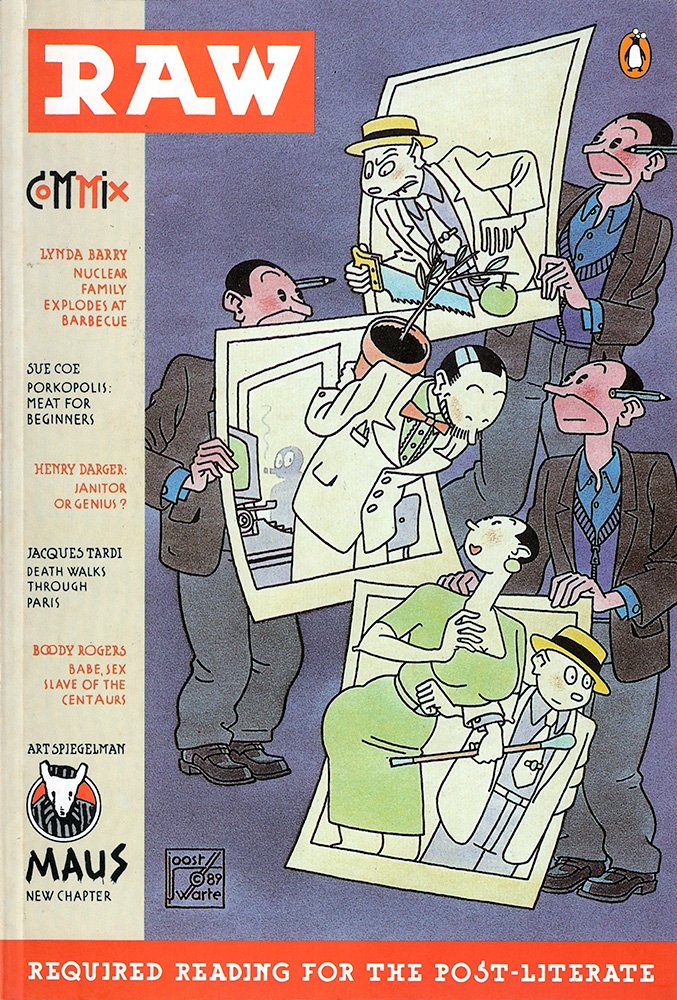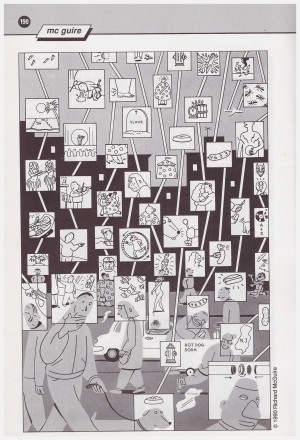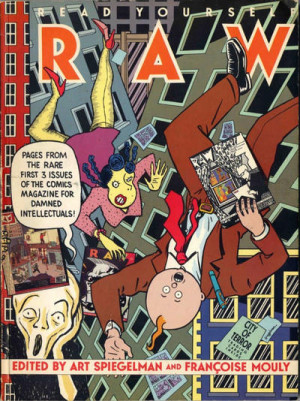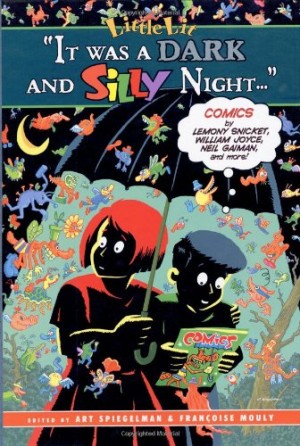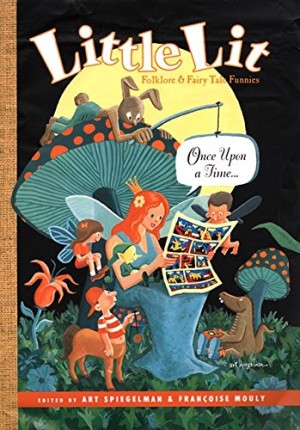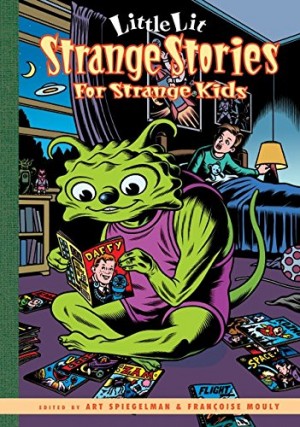Review by Graham Johnstone
Art Spiegelman and Francoise Mouly’s Raw championed distinctive American talents like Drew Friedman and Jerry Moriarty, while also introducing readers to pop-culture classics, and highlights of European and Japanese comics.
Americans Mark Beyer and Ben Katchor were by this time familiar. Beyer renders emotionally powerful stories in a naive, but fully realised, style. Here a couple find an inscribed ring and get drawn step by step into a strange situation. Katchor explores New York esoterica, this time disappearing jobs and businesses. Facing pages contain parallel stories, linked by a scene overlapping the pages, of the drinks outlet on ‘The Corner Location’. “They talk you dry” reflects the folding table salesman, as he heads there after his work.
Katchor’s conceptual device may have been inspired by the previous volume’s highlight – ‘Here’ by Richard McGuire. McGuire similarly plays with the form here in ‘The Thinkers’. There’s a single drawing of people on a city street, over which sequences of tiny panels follow their individual thoughts. Again, a brilliant idea, flawlessly realised.
Lynda Barry’s Raw debut is a brilliantly constructed tale of tweenagers ‘Sneaking Out.’ It doesn’t live up to their expectations, and they find out that’s also been the case for the adults around them. Like her newspaper strips collected in The! Greatest! Of! Marlys!, it’s seen from the perspective of the children, and drawn in a deliberately child-like style.
‘Oba’s Electroplate Factory’ captures the hardships of post World War II Japan. Stylistically, it’s recognisably Japanese, but avoids the typical exaggerations of manga. The story though is universal, and for the boy (based on creator Yoshiharu Tsuge himself) the factory still provides a necessary place and a role.
The 1949 episode of ‘Babe, Darling of the Hills’ by Gordon ‘Boody’ Rodgers is a rediscovered relic. It’s an absurd story of centaurs kidnapping beautiful girls to use them as humans use horses. It’s smarter than you expect, and gently raises questions about our treatment of animals. It’s a lighter companion piece to Sue Coe and Andrew Tyler’s brutally depicted mechanised slaughter in ‘This Little Piggy Went to Market’.
Dutchman Joost Swarte and Catalan Marti brilliantly distill and update earlier artists. Cover artist Swarte filters Hergé on the circular ‘Sweet’, while Marti improves on Dick Tracy creator Chester Gould. His pages gathered here as ‘Reality’ are developing takes on an unfolding news story of a fatal stabbing. It’s a situation less morally clear-cut that it appeared, and an illuminating contrast to the black and white perspective of his anti-hero Cabbie.
‘The Child Slave Rebellion’ highlights outsider artist Henry Darger. His autobiographical accounts of institutionalisation, injustice, mistreatment, and consequent anger and revenge, shed light on his artwork. He subverts Edwardian children’s illustrations – collaging and reworking them into images of not just rebellion, but also torture and hints of premature sexuality. Darger’s work was unknown in his life-time and only discovered posthumously. The editors pose the question here: “janitor or genius?” There’s definitely some of the latter.
The presentation of the Darger work also showcases the brilliant editing, design and production. His panoramic drawings are presented on fold-out pages, and the text made to look hand-written and torn from a notebook. The chapter of Spiegelman’s Maus is printed on grey paper and ‘Babe’ on newsprint – to paraphrase Dolly Parton, it costs extra to make it look that cheap!
Also included are substantial stories by Jacques Tardi, and Kim Deitch, and an early piece by Chris Ware.
25 years on, this remains an exemplary anthology, and most of the contents are otherwise uncollected, making this volume a good second-hand buy.
